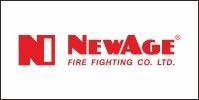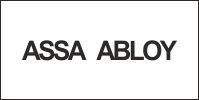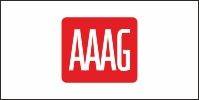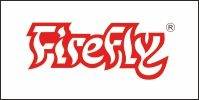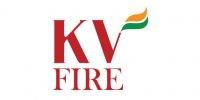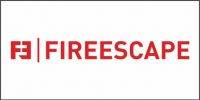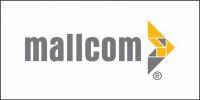 Introduction
Introduction
Every known fire type or phenomenon can be expected in a high rise building. Wind driven, Flashover, Backdraft, Fire gas explosion, underventilated. Any given fire might be restricted to a hermetically sealed room potentially creating an underventilated fire. It may be a multi compartment, multi floor, wind driven high energy fire.
All firefighters should understand the basic dynamics of a fire. They are explained in detail on our ” Physics of Fire and Smoke” page.
Most firefighters are well trained in suitable techniques for fire fighting for in the vast majority of fires they attend. Unfortunately High rise fires can present them with extraordinary and unusual fires phenomenon that they are both unfamiliar with and less well trained in how to attack them.
It is not the intention to re-teach Fire fighters current fire fighting techniques, but rather to discuss the selection and application of the most suitable techniques. Also to elaborate on some of the more obscure techniques that have fallen from favour but are in fact highly suited to fighting fires in tall buildings.
Water Supply
Almost all fire fighting tactic in high rise buildings will depend on Water. Some very small or specialised incidents may be extinguished using fire extinguishers (Dry Powder or CO2).
There are two key contributory factors that will affect tactics at high rise buildings,
- a) Supply pressure (at fire floor)
The supply pressure will greatly affect the flow rate through hoses and branches.
In the UK, for buildings with WET RISER installation (usually over 60M tall) the supply pressure will be fixed and the tactics can be developed around these known outputs. Typically buildings constructed prior to 2006 will have wet riser outlet pressures of 4 to 5 Bars. After 2006 recommended outlet pressure is 8 Bars. Pressures of 4-5 bar mean that Specifically designed Branches (low-pressure/high-flow fog or smooth bore) and 51mm hose will be a suitable combination.
With an 8 bar supply more conventional Automatic fog Branches and 45mm hose can be used.
For buildings with DRY RISER installations,the outlet pressure will be much more dependant on the inlet pump pressure and the losses due to pumping to height (head).
Most UK FRS will pump dry risers to 10 Bar (150psi) as this was the British Standard design and test criteria. Losses due to height relate to approximately 0.1 Bar /M. It can be seen that pumping water 55M could incur a height loss of 5.5Bar. This added to other losses (frictional and inlet) mean it may be that the outlet pressure on upper fire floors may only be 3 Bar
- b) Supply Availability
Flow rate is all-important in high rise fire fighting. A sustained attack on a developing High rise fire will require a reliable and consistent water supply. Individual Branches should have a target flow rate of at least 500l/m and for Branches deployed to fight larger open planned office or commercial space fires, 750-900 l/m is a better target.
A basic two line attack could require 1000l/m and this does not take into account additional safety and covering lines. Additionally, if any form of external fire fighting is to be uses, typically height vehicle or ground monitors, these can require very high flow to be effective (3000l/m) and can draw water supply away from internal fire fighting crews. Initially Hydrants with twinned lines will be used in most scenarios.
If the incident is escalating or an additional water requirement is needed, further supplies could be required. These may be additional hydrants on separate main feeds or large static water supplies.
 Observation & Control
Observation & Control
Incident commanders and Firefighters must be exceptionally cautious reading fire conditions in high rise buildings. The warning signs of all of the potentially dangerous fire phenomenon should be closely monitored and carefully interpreted (Wind-driven, Backdraft, Flashover.. etc). Information from Internal observation and external observers is key to better understanding what may be happening in the compartment(s) involved. This information should be relayed to fire fighting crews deployed to the fire floor. It is good practice to post safety observers in stairwells to check for unexpected smoke movement that may hamper fire fighting or rescue operations.
CONTROLING AIR PATHWAYS
Fire fighters should always endeavor to minimise the amount of air pathways they create and should maintain compartmentation whenever possible. Close any open doors they encounter and If the door to the fire compartment is open then close it if safe to do so.
THERMAL IMAGE CAMERAS (TICs)
At high rise incidents TIC are invaluable for fast incident location and ongoing monitoring of conditions both inside and outside the fire compartment. They greatly enhance firefighter safety and should form a part of the initial external survey, the internal reconnaissance and should be part of the equipment required by the compartment entry team.
POSITIVE PRESSURE VENTILATION (PPV)
PPV can be highly effective in moving smoke out of the building and creating ‘pressure protected’ stairwells and corridors. Pressurised safe areas (typically means of egress) created by PPV must always have the resilience of additional standby fans.
The use of PPV use must always be balanced against the potential wind and fire compartment pressures it has to overcome.
Whilst it is appropriate for Incident commanders to build ventilation into any tactical plan, smaller portable fans may not be able to overcome the pressurisation effect of the fire and/or wind.
Petrol PPV fans will contaminate the air within a building and most UK PPV Fans do not have Catalytic convertors.
PRE COMPARTMENT ENTRY
Firefighters be aware of and control Air Pathways as best as circumstances will allow. Often the deployment of equipment (Hoses) will breech the buildings existing compartmentation. They should where ever possible maintain compartmentation closing doors and windows and avoid obstructing fire compartmentation doors. Always try to avoid creating an air pathway between the fire compartment and the stairwell.
Consideration should be made to evacuate any areas at risk from fire or smoke spread once the fire compartment is open. This may include occupants whose escape route may take them past the fire compartment. Designate and categorise risk zones and put in place suitable measures to counter or reduce the risk in these areas.
 Take advantage of any fixed installations at hand, especially riser installations. Carefully risk assess the location of the outlets that are to be used. It is highly likely that any location between the fire compartment and the outlet in use will be affected by smoke. A good guide is to use the nearest outlet to the incident that is safe to set up (in other words not in smoke). Many UK FRS recommend using the outlet on the floor below the incident, but this will inevitably lead to stairwell smoke contamination and unwanted travel. Often outlets are located actually in the stairwell (as it is defined as a ‘protected area’ ) again leading to potential smoke contamination and unwanted travel.
Take advantage of any fixed installations at hand, especially riser installations. Carefully risk assess the location of the outlets that are to be used. It is highly likely that any location between the fire compartment and the outlet in use will be affected by smoke. A good guide is to use the nearest outlet to the incident that is safe to set up (in other words not in smoke). Many UK FRS recommend using the outlet on the floor below the incident, but this will inevitably lead to stairwell smoke contamination and unwanted travel. Often outlets are located actually in the stairwell (as it is defined as a ‘protected area’ ) again leading to potential smoke contamination and unwanted travel.
If the selection and use of the most suitable outlets could lead to extensive/stairwell smoke contamination and unwanted smoke travel then this must be factored into any tactic, so risk assessment and suitable control measures (typically PPV and safety observers) must be put in place as soon as possible.
Compartment Fire Fighting
Compartment entry must be well controlled.
If at all possible the integrity of the door and door frame should be maintained.
A line or strop attached to the door prior to opening will enable rapid closure if required. Crews must be fully prepared for a high energy fire that can quickly advance towards them.
Crews MUST be well practiced in door opening techniques and competent in using them whilst in full PPE and RPE. They must be ready to carry out a quick controlled retreat should the conditions in the compartment overwhelm the level of attack they can sustain.
An ideal entry tool setup is the Halligan (Hooligan) Tool and an Axe, known in the USA as a ‘set of Irons’.
UK firefighters must be fully conversant in the use of a set of irons before they attempt to use them operationally.
Crews must be ready in full Fire fighting PPE with RPE and suitable water supplies at hand and tested before compartment entry is attempted. Good inter-team communication is essential and all members should know and understand the entry process. Continual assessment of the compartment door is essential, ideally supplemented by Thermal image camera observation. Crews should be fully conversant with 3D, Indirect and Direct fire fighting techniques. With this knowledge and knowing the available water supply and equipment they have, they can choose the most appropriate technique (or more frequently, combination of techniques) to be used.
 An initial offensive attack into a closed flat/apartment should consist of a 2 hose-line entry team of (minimum) 4 firefighters working as 2 teams of 2. One team with a low pressure/high flow spray Branch and the second with a smooth bore 22mm branch (solid stream Branch) fed via 51mm hoses. As soon as possible back these lines up with appropriately positioned, manned safety jets in corridors and/or stairwells.
An initial offensive attack into a closed flat/apartment should consist of a 2 hose-line entry team of (minimum) 4 firefighters working as 2 teams of 2. One team with a low pressure/high flow spray Branch and the second with a smooth bore 22mm branch (solid stream Branch) fed via 51mm hoses. As soon as possible back these lines up with appropriately positioned, manned safety jets in corridors and/or stairwells.
The team on the spray Branch will act as initial fire control and the door is opened by the team with the smooth bore branch. This initial controlled opening should give crews some incite into the conditions in the flat.
Control of the compartment door is critical and at all times and one of the teams should be responsible for ensuring that the opening to the compartment door is kept to an absolute minimum.
If the fire is wind driven it MAY NOT behave in the same way as sealed or partially ventilated fire. Typically the neutral plane (the boundary between the heated smoke and the cooler air) may not exist. Wind turbulence can easily overcome any heated gas buoyancy. Wind may cause the fire and smoke to move away from them. More dangerously it may push the fire towards them with increasing intensity. Teams on the spray branch should endeavour to control any unexpected advancing flame front and if possible close the door to control ventilation.
There may be fast moving turbulence or swirling in the smoke, sometimes called ‘energetic smoke’
It has been observed that when openings are made into these compartments (typically the entry by Fire fighting crews) the incident worsens quickly. Heat and products of combustion may spread from the compartment, towards Fire fighting crews as it seeks alternative exit points or areas to pressurise. This spread is not just at at the top of the opening but may be the full height of the opening.
A commonly used description by Firefighters that have directly observed this phenomenon is… ‘it was like a jet engine’
As a potential starting point for an offensive attack into a flat/apartment consider: 2 hose-line entry team, of 4 firefighters, consisting of one line with a low pressure/high flow fog Branch and the second with a smooth bore 22mm branch (solid stream Branch) fed via 51mm hoses. As soon as possible back these lines up with appropriately positioned, manned safety jets in corridors and/or stairwells.
COMPARTMENT FIRE FIGHTING
The choice of fire fighting techniques is always limited by the available water supply and the Branches.
The restricted pressures and flow rates may mean that certain branches are being supplied WELL BELOW their optimum, or even minimum safe requirement. As such they will not necessarily work as anticipated.
Always remember : There is no one single fire fighting technique that will suit ALL high rise fire.
If at all possible fight fires from the outside the doorway to any compartment and allow space for the door to be quickly closed. Closing the compartment door can be the BEST fire control mechanism a fire fighter has.
With modern furnishings, the smoke you will encounter will be thick and dark. The fire may not be visible until you are right next to it. This can be a very dangerous situation and firefighters can be burned if they get too close to the fire, this is due to the high energy release rates from burning modern furnishings and wind driven fires can produce. If visibility is low and a Thermal image camera is not available and you can not see the fire, as you enter a suspected fire compartment, a useful tactic is to open the Branch and aim it about 1 meter from the floor (chest high when you are on your knees) and sweep the room. This will ensure you will hit the base of the fire.
Think about a typical living room or bedroom. Get on your knees and look. What is the highest piece of furniture? The bed or the couch. if you sweep the room at chest high you will hit the base of the fire. The rules still apply if you are making your way towards the fire and you encounter high heat conditions you can aim the stream of water at the ceiling ahead you and cool the area down, use short bursts of water and hit the walls and the ceiling.
Thermal layers.
It is important to note that the normal “thermal layers” and “neutral plane” experienced in Compartment fire fighting training and in many conventional building fires MAY NOT EXIST. This is often due to the unique wind pattens and air movement in and around high rise buildings. There are numerous observed fires where experienced fire fighting crews have reported that the flame front was at floor level and relatively clear air above it. (almost an inversion of the norm). This was not a flashover, but a consequence of strong winds affecting a fire.
If crews enter a high rise compartment and there is a sudden change in the thermal layers, this is usually indicative of a change in the ventilation characteristics of the compartment, most often a window failure. This can be a DANGERIOUS event for firefighters in the compartment.
Fog Attack (Wide Spray techniques/Pulsing/Gas cooling/Painting)
Generally regarded at the optimal compartment fire fighting technique in the UK and is widely taught. It relies on Firefighters being conversant in this technique an how it is applied to closed compartment (anti-ventilation) fires. Unfortunately many UK-FRS do not teach these Fire fighting techniques with main hose lines, concentrating only on high pressure hose-reels. They also tend not discuss its limitations in large compartments, ventilated or with high energy release rate fires (wind driven).
There are some potential obstacles to its use in the high rise environment. These are primarily related to the expected flow rates/pressures and the suitability of the Branches. Also the 3D technique may not be as effective at wind driven fires, due to extreme turbulence and high energy release rates.
In the rare circumstances that DO allow this technique to be used safely it can be very effective BUT, unfortunately “pulsing” short bursts of water into a wind driven 17MW fire is totally ineffective.
Indirect Attack
This is perhaps the forerunner of the “Fog” techniques and may be more applicable in the High rise environment. The theory behind the indirect attack is to aim the stream of water ( 30 degree or less pattern) at the ceiling or wall and allow the droplets of water to rain down on the fire. It has two effects:
- The water cools the ceiling and walls thus disrupting the thermal balance. Some of the water will vaporise into steam thus absorbing energy.
- The rest will fall like rain. Some will fall on the main body of fire to assist extinguishing the fire.
This technique will inevitably create a large amount of steam and steam will scald fire fighters and reduce visibility. This steam can pressurise the compartment and has to go somewhere. Make sure the steam creation is controlled and if possible, ventilated.
Remember if you open the Branch and it is on a pattern wider than 30 degrees you could crate vast quantities of steam immediately, especially if the fire has not vented. ALWAYS Check your Branch setting prior to application to the fire. (it may have altered since your initial compartment entry or from when you last used it)
In any fire if you disrupt the thermal layer by rapidly cooling the ceiling you will drop the thermal layer down to where you are, that means you could be scalded.
There are optimal times to use the indirect attack. If the fire has vented in the room of origin you may be able to push the heat and smoke and steam out the vent (window). Because the fire products are exiting the vent you will reduce the risk.
Another time that the indirect method will be effective is to control the hot gas layer above fire fighting crews or to cool the area ahead of you to prevent possible flashover. You are not putting the fire out, you are cooling the gasses that could ignite above and behind you.
If advancing towards the fire, the area gets hot do not hesitate to attack the ceiling ahead of you. Doing so you will reduce the risk of flashover.
Indirect fire fighting can be carried out with a variable spray branch which is ‘coned down’ below 30 degrees or a smooth bore branch
Direct Attack
This is to put water directly on the base of the fire and minimise disturbance to the thermal layer at the ceiling. This type of attack is best suited to a smooth bore branch, although a correctly supplied variable spray branch coned down to a solid jet will be adequate. Direct fire fighting requires that fire fighting crews have a direct line of site to the fire or can observe it through a Thermal Image Camera.
If the fire has not vented and you apply water to the base of the fire you will have rapid extinguishment of the fire and reduced steam, potentially reducing the risk of scalding. The thermal layer will cool more slowly and not drop down onto fire fighting crews. Direct fire fighting, if possible, will extinguish the fire more effectively than any other technique.
Combination attack
This is a combination of both Direct and Indirect Fire fighting. This can be a highly effective way of dealing with high rise compartment fires. It enables a degree of control over the overhead hot/burning gasses and the overall compartment thermal balance. It also allows for effective direct fire extinguishing. Sometimes this technique involves applying a narrow coned spray or jet into a compartment in a swirling spiral motion, thus hitting the upper gas layers and projecting water onto the fire itself. This technique can be useful in compartments that are ventilated and have very disrupted thermal layers. Another variation of the swirl is the “O-Z-T” water application patterns, where the fire fighting crew ‘write out’ these letters with a narrow spray/ jet on the back wall of the compartment.
The ‘TWO LINES IN’ offensive attack for High Energy (Wind Driven) fires.
As a potential starting point for an offensive attack into a flat/apartment that is exhibiting signs of a high energy fire and/or may be driven by wind:
A 2 hose-line entry team, consisting of 4 firefighters, one line with a low pressure/high flow fog nozzle and the second with a smooth bore 22mm branch (solid stream nozzle) fed via 51mm hoses. These teams must work in a coordinated way and have good communications with each other. As soon as possible back these lines up with appropriately positioned, manned safety jets in corridors and/or stairwells. The two offensive jets can use a combination of techniques to fight the fire but there should always be a substantial element of direct attack (application). A good safe practice would be to nominate one team to control any advancing fire/flame from and the other team to be direct attack.
Even down to 3 bars , correctly resourced this combination of hose lines should be able to supply a combined minimum of 750L/m
Firefighters should be fully proficient in all the 4 main Fire Attack techniques and how they may be combined. Most importantly, know each one’s uses and limitations. With this knowledge they can dynamically choose the best and safest fire fighting techniques for any given situation.
Fire fighting tactics: PERIODIC REVIEW
Fire fighting crews and Commanders MUST FREQUENTLY review the effectiveness of the chosen tactics. If its not working, find out why and correct the problem or change tactics. If equipped with a TIC then crews must use it!
Typically; If the fire is confined to a single compartment, it should be expected that, with the correct flow rates (750l/m with a two line attack), the fire will be under control fairly quickly, usually within a few minutes. If crews are offensively fire fighting for extended periods (longer than 10 Minutes) then the situation MUST be reassessed. Either the flow rate is inadequate of the fire is not being fought correctly.
A Wind driven fire is one of the most dangerous phenomenon a firefighter can experience. It can overwhelm an unsuspecting fire fighting crew.
Train for it , be well equipped for it, EXPECT IT and have a RETREAT PLAN in place.














